ITIL 4 Managing Professional Certification Course: High Velocity IT (HVIT) - Digital Product Lifecycle
1. Service value system enables HVIT
How does ITIL address the need for speed ?
- Operating model: a conceptual or visual representation of how an organization co‐creates value with its customers and other stakeholders, as well as how the organization runs itself
- High velocity IT operating model: an IT operating model where digital technology plays a major role in the co‐creation of value
Digital technology is central in the co‐creation of value:
- Dedicated value streams for each of the various products and services
- Co-creational culture that fosters high performance and continual improvement
- Permanent product/service‐based teams over temporary project teams
- Automation of IT processes, including infrastructure as code
2. Four Dimensions of Service Management (FDSM)
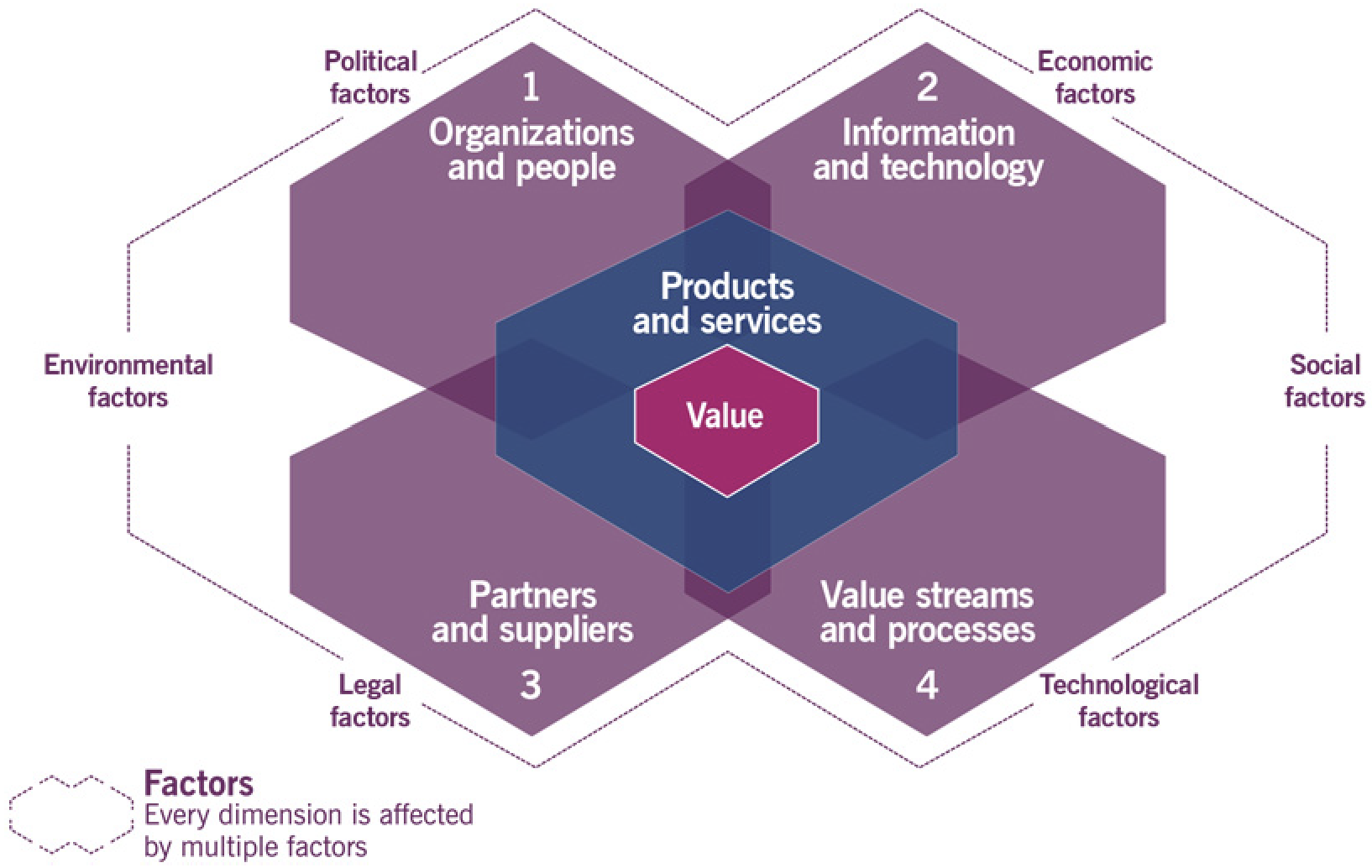
2.1 HVIT & Organizations and People Differentiating digital technology is often managed as part of primary business activit:
IT and business staff often co‐located No SLAs because no separate organization delivering services but still need metrics and KPIs |
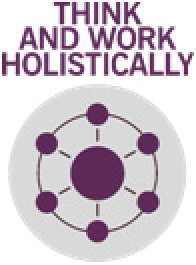 |
||
2.2 HVIT & Information and Technology Higher demands:
Information is a valuable resource. IT should be aware of what data they have and how it could be better used More use of real time information (alert to incident flow, collaboration tools…) AI/ML growth will need good information and knowledge |
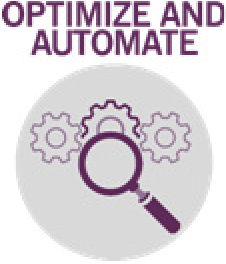 |
||
2.3 HVIT & Partners and Suppliers Extensive use of purchased products or services (cloud infrastructure, platforms, software...):
Use of external experts/consultants |


|
||
2.4 HVIT & Value Streams and Processes Best to create a unique value stream for each digital product/service:
|
 |
 |
 |
2.5 HVIT & External Factors
An organization is impacted by external factors across all four dimensions (PESTLE):
- Political
- Economic
- Social
- Technological
- Legal
- Environmental
Couple with volatility, uncertainty, complexity, ambiguity (VUCA), definite need for effective management
3. Service Value System
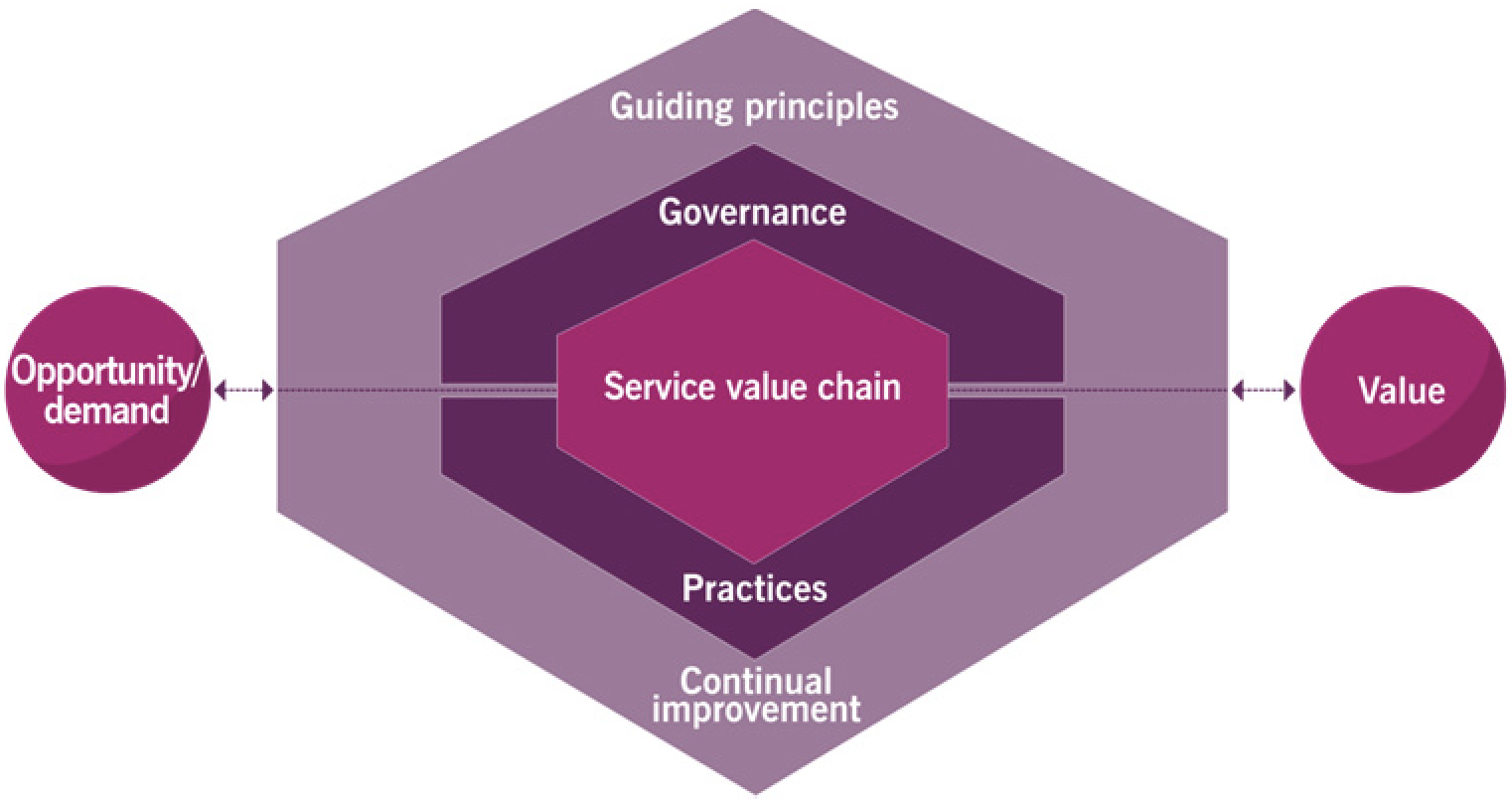
3.1 Governance and management
Governance directs and controls the organization: evaluates, sets direction for managers, evaluates performance
Managers plan, build, organize, and improve the organization
In digitally enabled organizations:
- The organization (including IT) is responsible for digital technology and its use
- Practitioners operate within governance and management framework
- Understand constraints, know how to act, apply insight and judgement
- Predetermined instructions not feasible, need to exercise judgement, bend the rules
3.2 Reconstructing for service agility
Traditional management is often based on specialization, prescriptive processes, performance targets
Knowledge work and service provision is different:
- Many subtle human interactions
- Hard to predict how a service interaction will go (these are social interactions, people aren’t machines, detailed targets don’t work)
- Loosen control, give people freedom to use judgement (within constraints)
- Respect team members values and allow them to work within these
Retain detailed procedures for predictable work (provision of a standard laptop to a new employee, etc…)
3.3 VUCA
VUCA is a serious managerial challenge:
- Volatility: Nature, speed and dynamics of change
- Uncertainty: Lack of predictability, prospects of surprise
- Complexity: Many forces, confounding issues, no cause/effect chain
- Ambiguity: Haziness of reality, easy to misread, mixed meanings
Assess the context, act, fail, learn from the failure
Fewer long‐term plans, more evolutionary approaches:
- Repellents constrain behavior (policies, rules, sanctions…)
- Attractors encourage behavior (indirect and voluntary)
Practitioners play an active role in performance and management
3.4 Service interactions Takes place when consumer makes use of provider’s service offering Service offering can include service actions, access to resources, and goods Service consumer interacts with service provider’s resources/p> Service provider interacts with service consumer’s resources Band of visibility determines what resources are visible to each other:
|
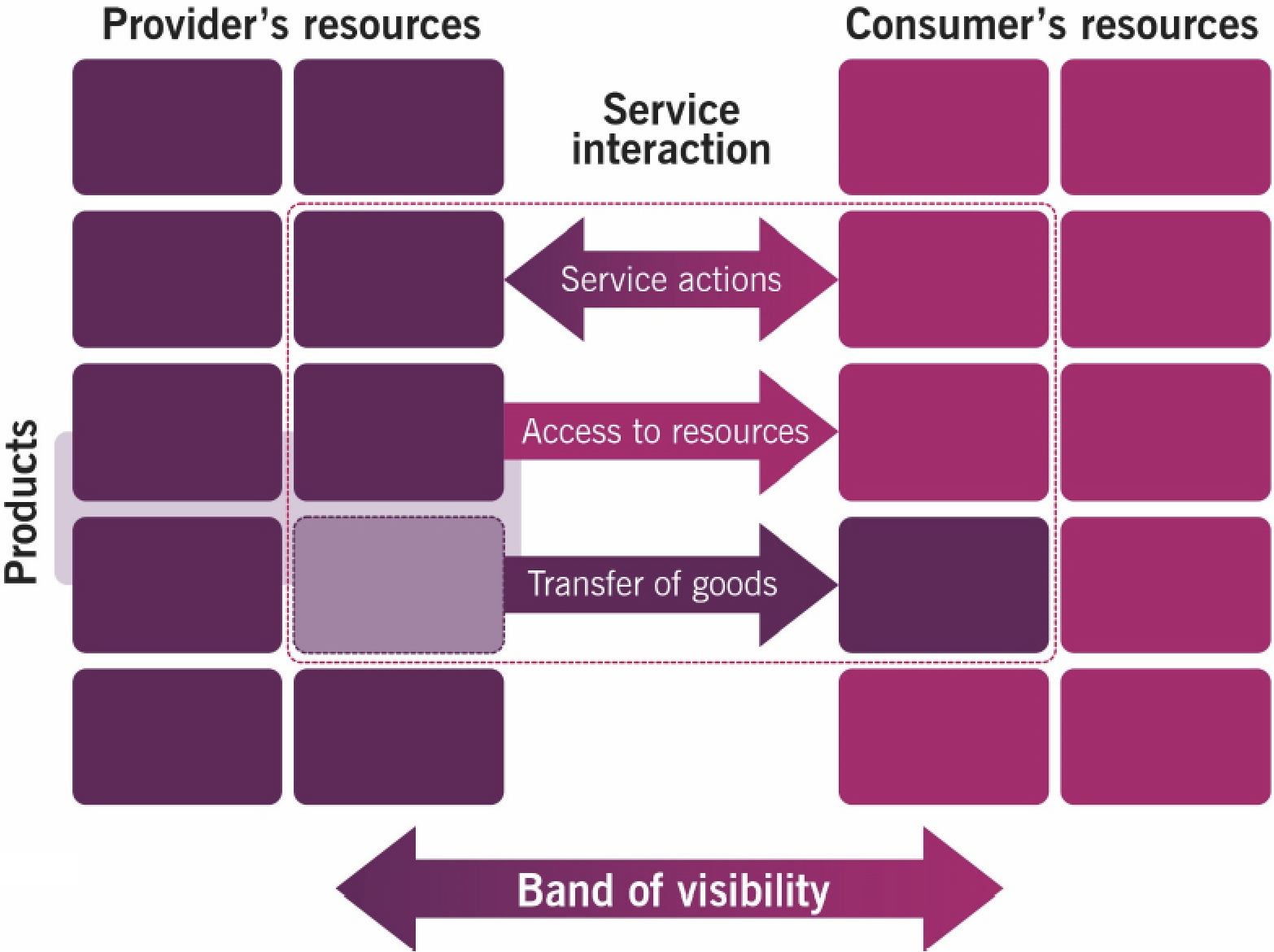 |
Go back to ITIL 4 Managing Professional Certification Course: High Velocity IT (HVIT) to finish this chapter or to the main page ITIL 4 Managing Professional Certification Course.
Interesting Management
-

Part 1: A good manager, better team motivation, better team productivity, better team results
When you are managing a team, “how to be a good manager” is the “must”...
-

Report optimization, increase your time management
As manager, I am doing many reports, even when I was an ITIL consultant, I still needed to do many reports...
-

Tools to get your ITIL intermediate certifications, the missing 15 points for the ITIL 4 Managing Professional
ITIL V3 is going to be obsolete...
-

The importance of the first customer meeting for the service
Managing an IT service when I start a new company is not an easy task, particularly true, if the service...



